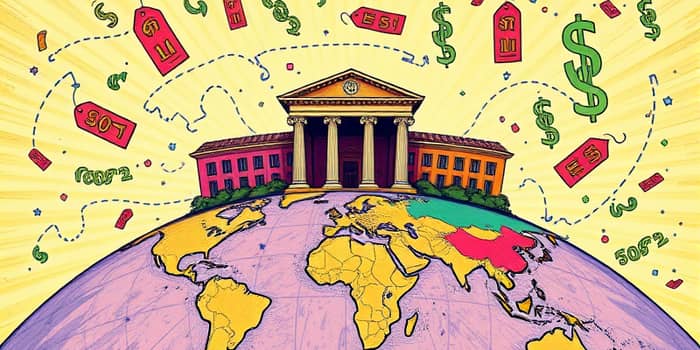
Across major economies, monetary authorities are walking a tightrope between supporting growth and taming lingering inflation. After a period of dramatic tightening, key institutions are now exploring measured easing, mindful of renewed price pressures and labor market dynamics.
In early 2025, headline inflation varies dramatically across regions. China reports the lowest inflation rate among major economies at 0.5%, while Russia endures one of the highest sustained price increases at 9.9%. The EU and US have witnessed a gradual normalization of consumer prices, yet they remain vigilant against persistent core and services inflation that could derail long-term targets.
Following aggressive rate hikes in 2022–23, central banks began a coordinated pivot to rate cuts by mid-2024 as headline inflation cooled. Policymakers now face a delicate balance: ensuring that disinflation does not stall economic momentum, while guarding against the risk of prices reaccelerating.
In the second quarter of 2025, major central banks adopted a mixed approach. Some kept policy unchanged, signaling caution, while others proceeded with modest cuts to stimulate softening growth.
While the Fed and BOC held steady, the ECB and BOE have embraced modest easing, reflecting diverging inflation trajectories and growth prospects across their constituencies.
Central bankers face a complex array of forces shaping price dynamics. Energy costs, wage growth, and global trade frictions all play a role. In Europe, a stronger euro and lower commodity prices have eased headline inflation projections, but service-sector costs and labor market tightness continue to pose risks.
Anchoring inflation expectations remains central to credibility. With most authorities targeting 2%, deviations above or below this threshold must be managed via clear communication and transparent frameworks.
The pandemic shock exposed the hazards of underestimating inflation persistence. Early assumptions that price surges would be transitory led to a policy lag, necessitating sharper rate increases later on. This sequence has prompted a reevaluation of how fiscal and monetary support are calibrated during crises.
Forecasts for headline inflation in the euro area now average 2.0% in 2025, dip to 1.6% in 2026, and rebound to 2.0% in 2027. Core inflation is expected to moderate from 2.4% in 2025 to 1.9% in subsequent years. GDP growth projections point to gradual pick-up, from 0.9% in 2025 to 1.3% by 2027, supported by rising real incomes and infrastructure investment.
Future policy moves will be guided by the trajectory of wage growth, energy prices, and global trade dynamics. If inflation continues to converge on targets, further rate cuts may follow, though attention to re-acceleration risks will constrain the pace. Synchronization of easing across countries is unlikely, as each economy grapples with unique pressures.
Central banks are also refining their toolkits, exploring new frameworks to address non-linear shocks and enhance financial stability. Macroprudential measures, forward guidance, and asset purchase programs may see renewed focus as policymakers seek to balance growth, employment, and price stability.
Ultimately, the recalibration of monetary policy in the late 2020s will hinge on the ability of central banks to maintain credibility while adapting to evolving economic landscapes. Their success will depend on transparent communication, data-driven decision making, and a willingness to adjust course when unexpected challenges arise.
For households and businesses, understanding this nuanced policy environment will be key. As rates adjust and expectations shift, borrowers, savers, and investors must stay informed and prepared to navigate a world where inflation remains an ever-present concern.
In this era of persistent price pressures, the actions and messages of central banks will continue to reverberate across global markets, shaping growth prospects and financial conditions for years to come.
References













